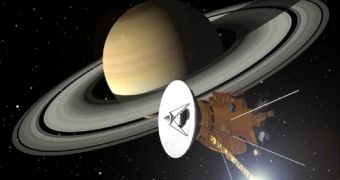Don't worry. The famous probe is not out of control, however NASA will turn over control of the spacecraft to students during June 10, in a contest with the role of raising the interest of the youth in science. The contest will be attended by students from the 5th to 12th grades, that will write essays to NASA in order to determine which of the three science targets will be photographed by the orbiter on June 10.
Usually, engineers responsible for the Cassini spacecraft choose which mission must take place, according to the possible scientific results which can be extracted afterwards; but the "Cassini Scientists-for-a-Day" competition will see that students will choose what mission Cassini should carry on June 10.
"It's a really fun way for kids to learn about Saturn and what the mission is doing. Students have to do their own research to write their essay. That way, they learn how to ask questions about the solar system and what we still need to understand," said Rachel Zimmerman-Brachman, education and public outreach specialist with NASA's Jet Propulsion Laboratory.
NASA reveals that the current orbit of Cassini will take the probe at a distance of about 793,000 kilometers away from Saturn and will approach the planet at a speed of about 22,565 kilometers per hour. This means that, for about 55 minutes, the probe will have the opportunity to photograph almost any section of the Saturnian system, including some of largest moons of the planet, Rhea and Enceladus. Along with the planet's rings and the small satellite Pan, these are the most likely targets for the mission on June 10.
The essay subjected by students must be at least 500 words long, must point a target for study and motivate scientifically their proposal.
Just a few weeks ago, the Cassini orbiter executed a flyby around Enceladus in order to determine the source of the watery plumes emerging from its surface. Rhea on the other hand is believed to harbor its own set of rings; if true, it would be the first ever moon proven to have material rings orbiting around it. Last but not least, Pan, measuring only 20 kilometers in diameter, orbits Saturn from within the planet's rings.

 14 DAY TRIAL //
14 DAY TRIAL //